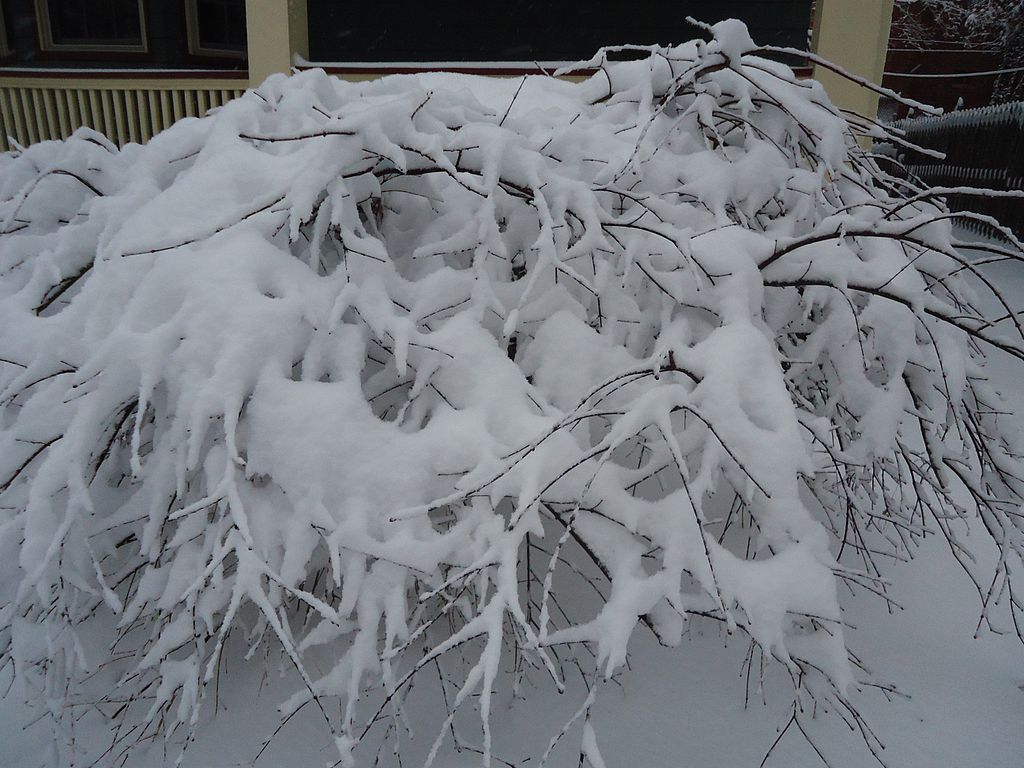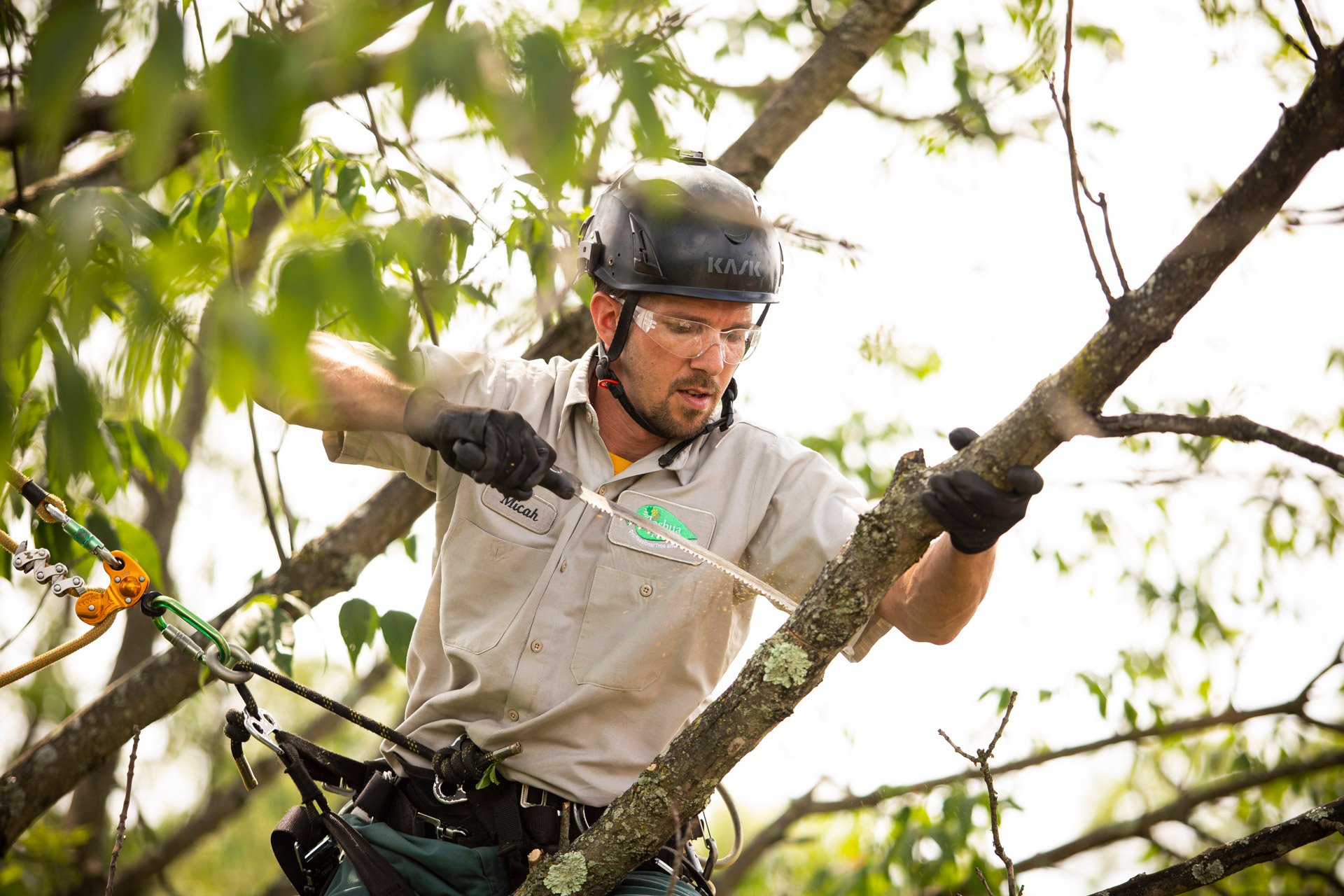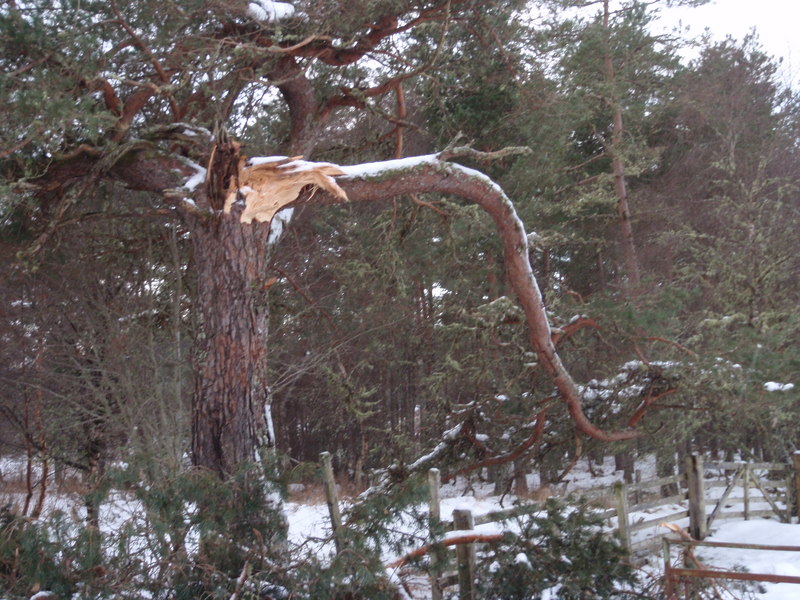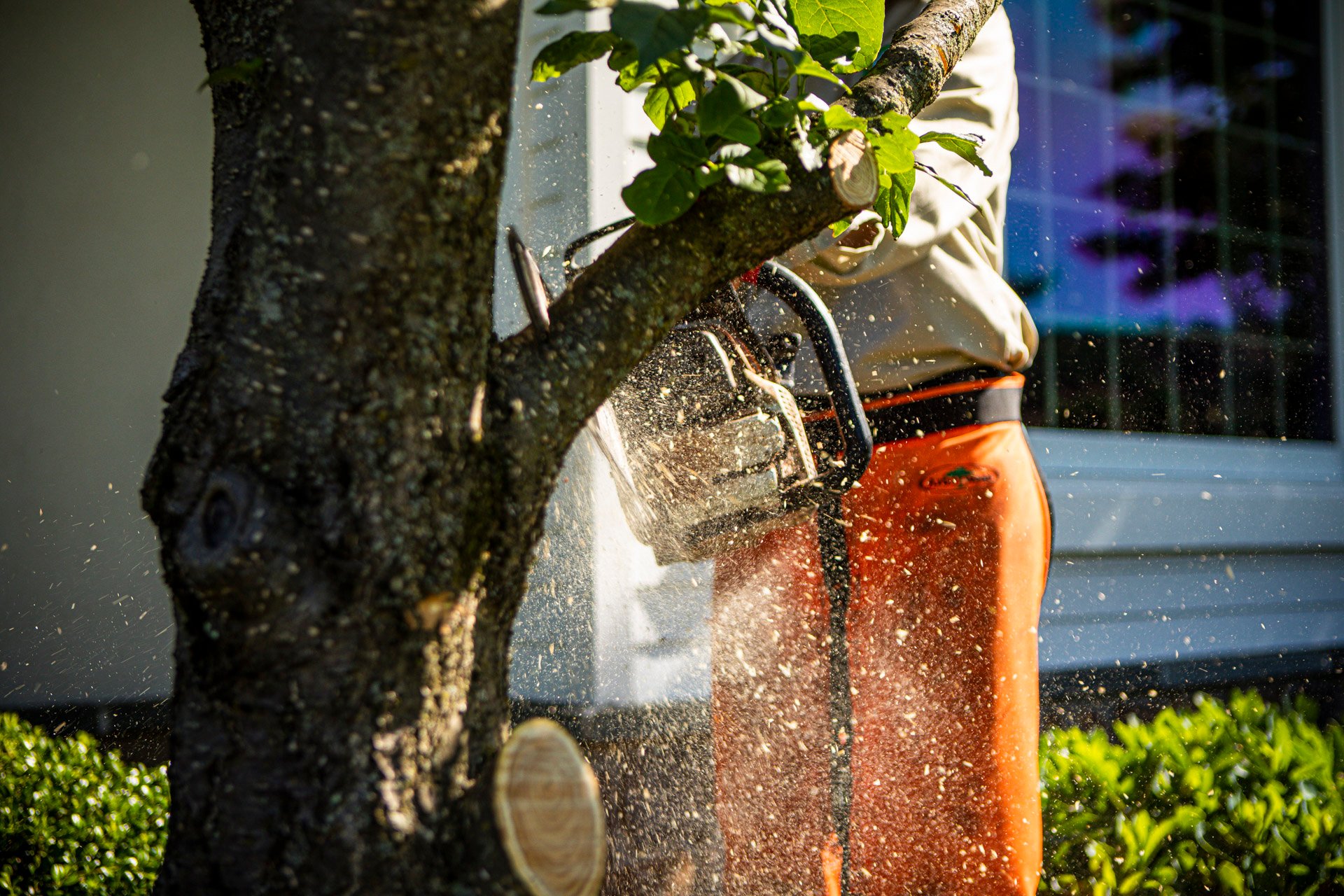A snow-covered landscape in winter? Beautiful. Unfortunately, the heavy and wet snowfall that parts of the country can experience can be quite damaging to the trees and shrubs on homeowners’ properties.
Snow that is left sitting on shrubs can make them misshapen and unsightly. And heavy snow or ice on trees can cause limbs to break or also affect the overall aesthetic shape and appearance of the tree.
It can be frustrating after a long winter for homeowners to see a messy landscape as a result of snow and ice covered trees and shrubs.
Whether you currently have ice or snow bent trees and shrubs or you are just worrying about it, you might be wondering what you can do.
How can you prevent future damage and what can you do if you’ve already experienced a problem? Let's take a look.
Snow Damaged Trees and Bushes: The Common Culprits
Some trees and shrubs may be more prone to snow and ice damage simply based on factors like their shape, size, and species.
Evergreen shrubs (such as Arborvitae or Yew bushes), for instance, are known to become easily damaged by the weight of snow or ice sitting on top of them.

In terms of trees, White Birch have bamboo-like flexibility that does allow them to survive high winds and even the weight of ice and snow pile-up without snapping. However, they can only take so much. If snow or ice sits on them for too long, they can develop a bent posture that doesn’t go away.
Similarly, the fact that trees like Poplars, Willows, and Elms have more brittle wood, they are a bit more likely to fail due to a heavy snow or ice load.
However, all of that being said, any tree or shrub, of any species, can fail as a result of snow and ice build-up. It’s important to recognize that no tree or shrub is safe if the snow and/or ice piles up too much.
How to Prevent Snow Bent Trees and Shrubs
First, we’ll talk about preventing these problems in the first place because that’s truly your best course of action.
Trees can recover from some damage, but structural damage often means unhealthy trees that become candidates for removal.
Prevent Tree Damage During Winter Storms
During a heavy snowfall, go out every 4 or 5 hours and brush things off. That means going out with a broom and brushing off the tops of any tall shrubs or the branches of your ornamental trees (that you can reach from the ground with a broom—we do not recommend climbing anything!).
You can also give your shrubs a good shake and try to shake off snow buildup. Do your best to get as much snow off of them as you can and do not let it pile up.
It’s amazing how far this minor effort can go. When you get your shrubs and ornamental trees as cleared from snow as possible, they’ll dry out quickly once the sun starts shining and the snow stops falling.
As mentioned, the biggest factor in all of this is simply keeping up with it. This is easier said than done in the moment.
When in the midst of a heavy snow, you probably won’t want to trudge out into the yard and clean off your plants. However, if you wait too long, it’s going to get harder and harder to complete this task, and in the meantime, your plants will be bearing the weight of that heavy snow.
A Word on Ice Build-Up
Be advised, if you're dealing with an ice storm and your small trees or shrubs are coated in ice, you can’t take this same approach.
Don’t shake them or try to knock ice off or you could end up breaking branches or doing more damage. Following an ice storm, you should inspect your trees and shrubs for damage and call in a professional if you spot a concern.
Structural Pruning for Storm Damage Prevention
Proper and regular pruning is also important in terms of preventing ice or snow storm damage to trees and shrubs.
Trees, in particular, can be pruned so that any defects or weak branches are removed allowing your trees to have better chances withstanding a snow or ice storm (and the high winds that often come with this).

If you’ve continued to maintain your trees with structural pruning, then you’ll be able to improve your chances that your trees will be able to withstand the added weight that can come from snow and/or ice.
However, if you didn’t have pruning performed, there’s really nothing that you can do in the midst of a snowstorm. With a large tree, you’re just going to have to wait and see what happens. If damage does end up occurring, you’ll need to address the damage when the storm has passed.
Additional Care: Tree Cabling
Sometimes, during pruning, a weak limb will be spotted. Large, weak limbs can be supported using bracing or cabling.
With tree cabling, specialized hardware including eye bolts and cables are installed in the upper canopy of trees to help reduce the chance of splitting or cracking.
These cables will need to be adjusted or replaced as your tree grows.
Additional Care: Bracing Trees
If the tree trunk has already begun to split, a tree bracing system may be utilized. This includes rods, washers, and bolts that add support to the trunk and slow the process of splits.
How to Repair Snow Damage on Trees and Shrubs
If you’re reading this article and you’ve already experienced damage, then you might be wondering what you can do.
The exact solution will depend upon the type of damage that occurred.

Let’s look at this in terms of trees and shrubs individually
Snow and/or Ice Damage to Trees
Some of the signs to look for in a storm-damaged tree include:
- Cracks in the tree trunk or the limbs
- A significant root injury (like a big gash)
- Broken or hanging limbs
- Leaning
- Fallen limbs
Sometimes, repairing storm damage to trees can be addressed simply by removing the damaged limb (or limbs). This would mean cutting back to the next lateral or to the trunk of the tree if necessary.
Pruning of any small, broken branches is also important. Disease and pests can begin to infest a tree that has open “wounds.” Pruning will help the tree to heal faster.
That may be all that your storm-damaged tree needs if the damage was minimal.

However, when large limbs get ripped from a tree, they don’t break off in a way that is conducive to healing. These trees may require a lot of care.
Large limbs can break away and even tear some of the trunk off with them. When this occurs, scars are left behind that will lead to decay and potentially disease. A Certified Arborist will need to regularly assess these areas as the tree’s life may be shortened and the tree’s risk factor may increase with time.
The impact to lifespan will all depend upon the severity. An arborist will be able to provide a clearer picture of what to anticipate.
In extreme cases, where it is determined that the tree may never recover, tree removal might be your best course of action. If the tree is posing any sort of threat of falling (or having a limb fall), then this could be the safest choice, as well.
Snow and Ice Damage to Shrubs
Shrubs that remained in a bent or twisted position for a long period of time may have lost their shape as a result of heavy snow or ice pile-up. Come spring, if your shrubs look misshapen, you might be thinking about hiring a professional.
First and foremost, it’s important to have realistic expectations. A professional arborist is not going to have a magic wand and be able to instantly get your plants back into shape.
Generally, the best course of action is to attempt to re-shape the shrubs. This will likely require a combination of pruning as well as tying branches to attempt to fill unsightly gaps and add some shape back to the shrub.
We might be able to pull a limb one way or another in order to fill voids. We might also be able to use stakes to help bent shrubs stand up straight.
Over time, this should receive ongoing inspection and eventually be removed as leaving shrubs tied up for too long could cause long-term damage.

Note: An arborist can fill voids on smaller, ornamental trees by using an adjustable chain-lock system.
In severe cases, it can take some time and growth to prune your shrubs back into ideal shape and it will be vital that you are patient and give it some time. Those who are unwilling to wait may consider replacing severely damaged shrubs and then being sure that they are diligent in preventing damage in the future so that this doesn’t happen again.
A Word on DIY Repair for Snow Damaged Trees and Bushes
While a lot of people think about tackling these issues on their own, sometimes it can be dangerous work. If you’re dealing with a large, damaged tree, we would absolutely advise that you should call a professional for an assessment.
Although a lot of people think of tree accidents as happening during a storm, many times they actually occur after the storm has passed.
Never assume that you are in the clear or safe just because the storm has passed and your tree is still standing (or the limb is still intact). There may now be tree weaknesses that you can’t see.
Choosing a Shrub & Tree Care Professional
When it comes to snow-damaged trees and bushes, you want to get your landscape back on track as quickly as possible. The last thing that you want is to not be able to enjoy your spring landscape to the fullest because of damage that occurred over the winter.
Hiring a tree care professional that has true expertise, including having Certified Arborists on staff, can make a huge difference in your results.
A true tree care expert is going to be able to look at your landscape as a whole and provide the best possible recommendations to repair any damage that you’ve experienced and also help prevent these types of problems going forward.
Just keep in mind that not all tree care companies are created equal. Some will have better-trained and better-qualified team members on staff than others.
In fact, when we have been out for storm damage assessments we have heard some concerning things from homeowners regarding other tree care “professionals” with a lack of thoroughness.
We might be out to look at a tree that has obvious damage, but while we’re there for a tree inspection, we’ll look at all the trees on your property. We have been on properties and informed homeowners that they have dead limbs in another tree they weren’t even calling us to look at and their response is often, “I’ve had other tree services companies here and nobody has pointed that out.”
When it comes to something as important as both the beauty and the safety of your property, you can accept nothing less than the best.
Whether you already have a tree or shrub that has been damaged by a storm or you’re just looking to have your landscape assessed for potential problems down the road, you want to choose a company that truly knows their stuff.
With the right care for your trees, you’ll gain valuable peace of mind. If you’re interested in having your trees inspected and their health assured, contact us for a free consultation or give us a call at 833-JTE-TREE.
Image sources: snow covered shrub, damaged tree




